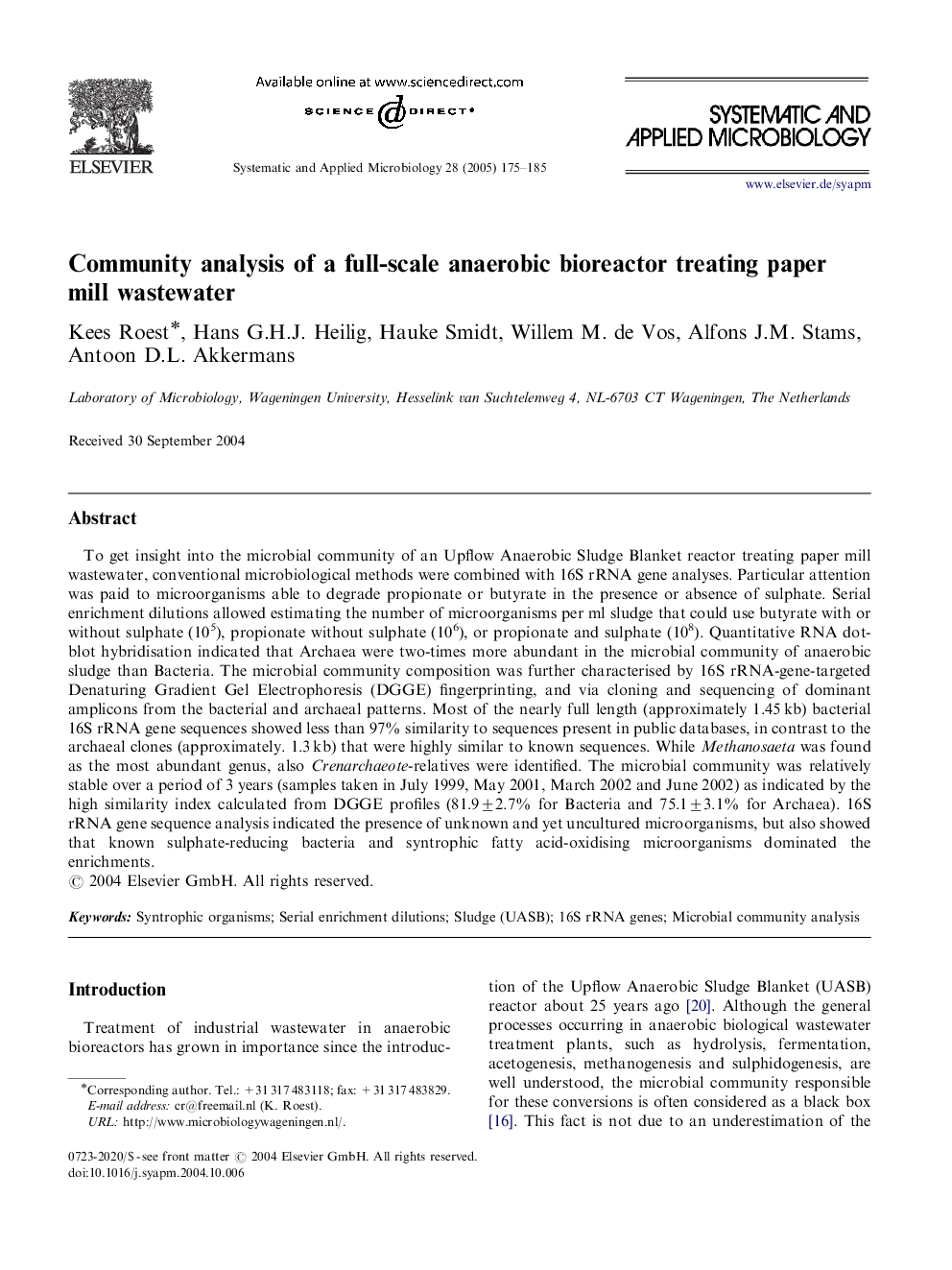| کد مقاله | کد نشریه | سال انتشار | مقاله انگلیسی | نسخه تمام متن |
|---|---|---|---|---|
| 10879840 | 1076796 | 2005 | 11 صفحه PDF | دانلود رایگان |
عنوان انگلیسی مقاله ISI
Community analysis of a full-scale anaerobic bioreactor treating paper mill wastewater
دانلود مقاله + سفارش ترجمه
دانلود مقاله ISI انگلیسی
رایگان برای ایرانیان
کلمات کلیدی
موضوعات مرتبط
علوم زیستی و بیوفناوری
علوم کشاورزی و بیولوژیک
بوم شناسی، تکامل، رفتار و سامانه شناسی
پیش نمایش صفحه اول مقاله

چکیده انگلیسی
To get insight into the microbial community of an Upflow Anaerobic Sludge Blanket reactor treating paper mill wastewater, conventional microbiological methods were combined with 16S rRNA gene analyses. Particular attention was paid to microorganisms able to degrade propionate or butyrate in the presence or absence of sulphate. Serial enrichment dilutions allowed estimating the number of microorganisms per ml sludge that could use butyrate with or without sulphate (105), propionate without sulphate (106), or propionate and sulphate (108). Quantitative RNA dot-blot hybridisation indicated that Archaea were two-times more abundant in the microbial community of anaerobic sludge than Bacteria. The microbial community composition was further characterised by 16S rRNA-gene-targeted Denaturing Gradient Gel Electrophoresis (DGGE) fingerprinting, and via cloning and sequencing of dominant amplicons from the bacterial and archaeal patterns. Most of the nearly full length (approximately 1.45 kb) bacterial 16S rRNA gene sequences showed less than 97% similarity to sequences present in public databases, in contrast to the archaeal clones (approximately. 1.3 kb) that were highly similar to known sequences. While Methanosaeta was found as the most abundant genus, also Crenarchaeote-relatives were identified. The microbial community was relatively stable over a period of 3 years (samples taken in July 1999, May 2001, March 2002 and June 2002) as indicated by the high similarity index calculated from DGGE profiles (81.9±2.7% for Bacteria and 75.1±3.1% for Archaea). 16S rRNA gene sequence analysis indicated the presence of unknown and yet uncultured microorganisms, but also showed that known sulphate-reducing bacteria and syntrophic fatty acid-oxidising microorganisms dominated the enrichments.
ناشر
Database: Elsevier - ScienceDirect (ساینس دایرکت)
Journal: Systematic and Applied Microbiology - Volume 28, Issue 2, 16 March 2005, Pages 175-185
Journal: Systematic and Applied Microbiology - Volume 28, Issue 2, 16 March 2005, Pages 175-185
نویسندگان
Kees Roest, Hans G.H.J. Heilig, Hauke Smidt, Willem M. de Vos, Alfons J.M. Stams, Antoon D.L. Akkermans,